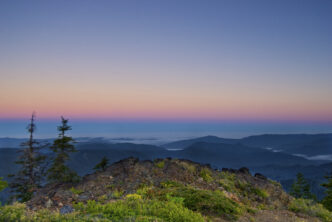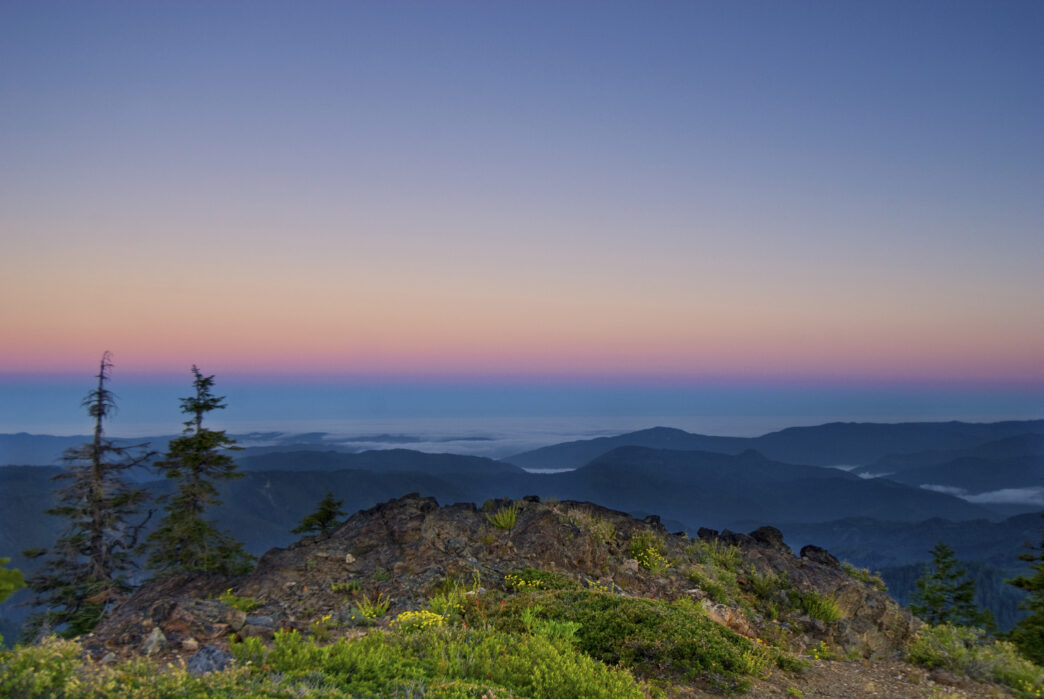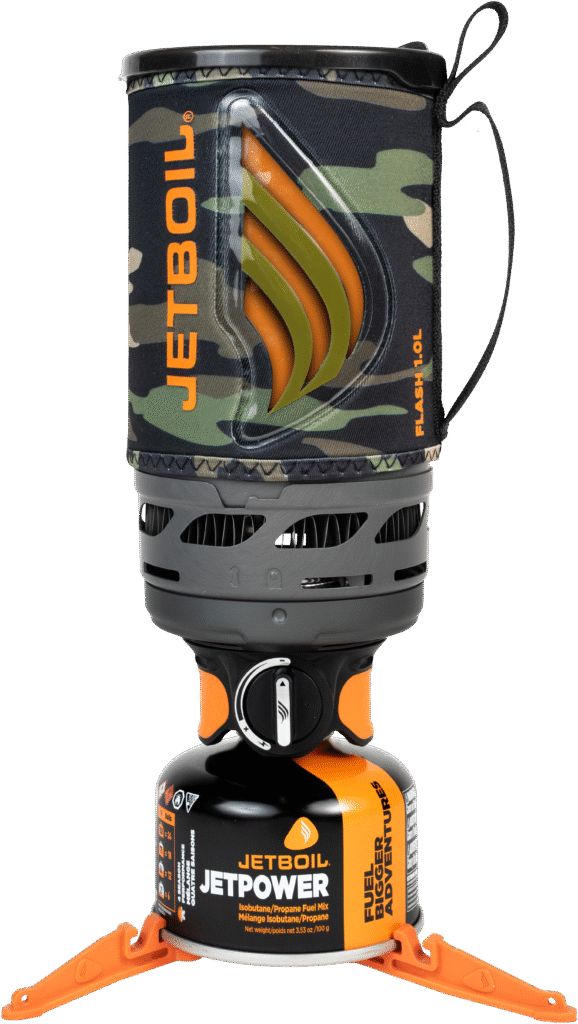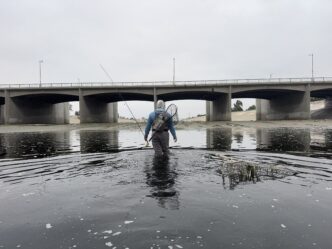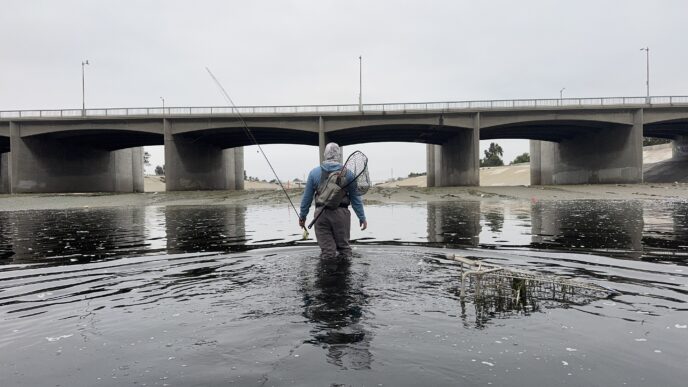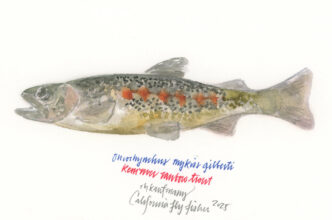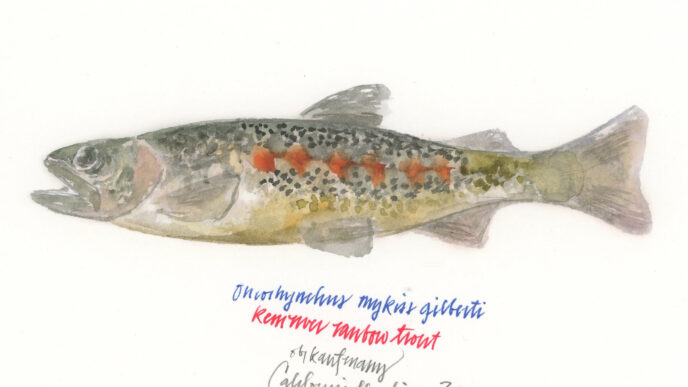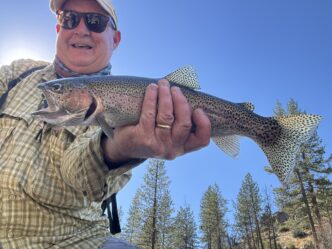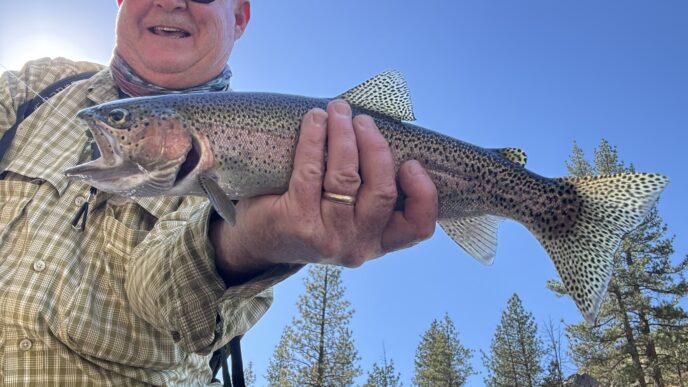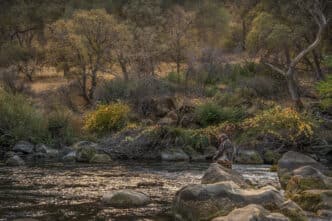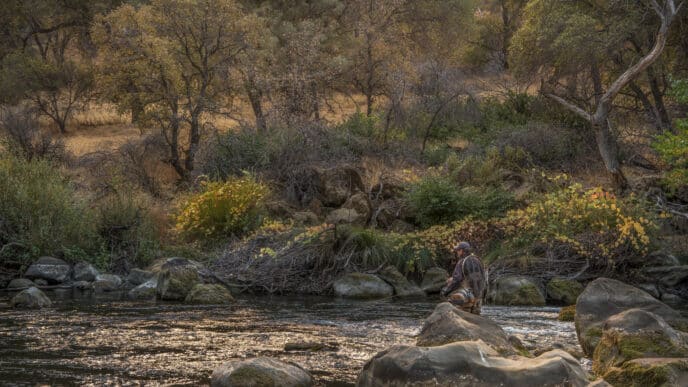A Backpacker’s Angling Sanctuary
The Trinity Alps, nestled just south of the Oregon border yet a five-hour drive north of California’s state capital, span more than half a million acres of untamed wilderness.
Remote, serene, and largely untouched, the area is blissfully devoid of human interference. With mountain peaks like Mount Thompson rising to 9,002 feet, and her friends nearby tickling that same height, alpine vistas are guaranteed. While not as high as the Sierra, these northern, coastal peaks demand equal respect and showcase more inclement and unpredictable weather.
Every trail into this wilderness begins gently, within the towering canopy of pine forests, then suddenly explodes into an uphill scramble of granite to unlock the region’s hidden gems—its alpine lakes.
Unlike the Sierra’s John Muir Trail, which I compare to Highway One down the California coast, linking the area’s natural beauty from point A to point B along a single, majestic spine, the Trinity Alps are more like the New York City subway. There’s no one trail that leads you to a chain of lakes or connects you to a line of mountain peaks to summit. Instead, picture the alpine lakes as Grand Central Station with routes circling around it and branching off in every direction.
Most anglers who venture into this wilderness take the weekend-warrior approach: Hike in, fish, and hike back out. But these lakes called to me. So I made a personal vow: to spend an entire summer exploring them, one weekend at a time. I wanted to see what they had to offer—and who, or what, called them home.
As the days began to heat up and winter rains started to fade, I couldn’t help but shoulder my backpack and strap in my fly rod. I would get anxious and riddled with guilt if I saw a day that was too perfect to ignore. My treatment for the ailment was simple.
My very first backpacking trip—ever—was in this wilderness, back when I was in college. The crunch of dirt beneath my boots stirred that memory instantly. This landscape had created the trail monster I had become. Returning felt like a thank-you. A pilgrimage to the place that opened my eyes to what was possible.
The first trip of the season was one of the longer ones, but with the length came a higher value for the destination. The trail meandered beside a river of the same name, gradually guiding me up and toward the lake from which it flowed. The sheer difficulty of the 4,000 feet of elevation gain and a pack heavy with food slowed me down, but what really held me up were endless fishing opportunities along the way. The creek flowed cold and clear over boulders and through deadfall of trees, forming perfect eddies and deep pools where trout surely hid.
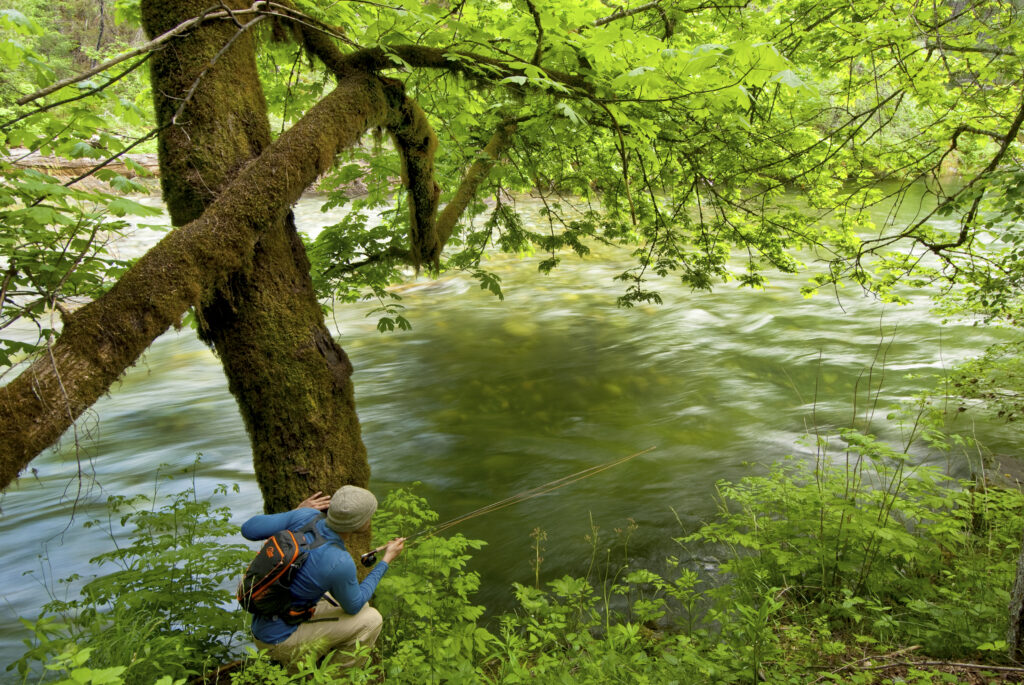
Once I got to the lake, though, the hard work, sore calves, and sunburnt forehead were worth it. The views? Somewhere in the thesaurus under “amazing.” The trout? Apparently, they knew they weren’t the stars of the show. I didn’t get so much as a strike. It was late May, and there were still icebergs floating in the lake. Maybe I was there a little too early. Still, I wasn’t disheartened. I pitched my tent in a grassy patch between granite boulders, lay back, and spent my first night under the stars without a soul in sight and only the sound of the creek cascading below.
Heading back to the car the next morning, I felt accomplished—but also hooked. I knew this was just the beginning, and that I would explore further.
The next trip beckoned the following weekend with weather too good to pass up. With my backpack loaded with all the necessities and an overnight’s worth of food, I slammed the car door and hit the trail again. As before, the trail began following a creek enveloped in a canopy of towering pine trees before bursting into alpine granite under the piercing June sun. Sweat-drenched, I arrived at the lake—and immediately rigged the fly rod before setting up camp.
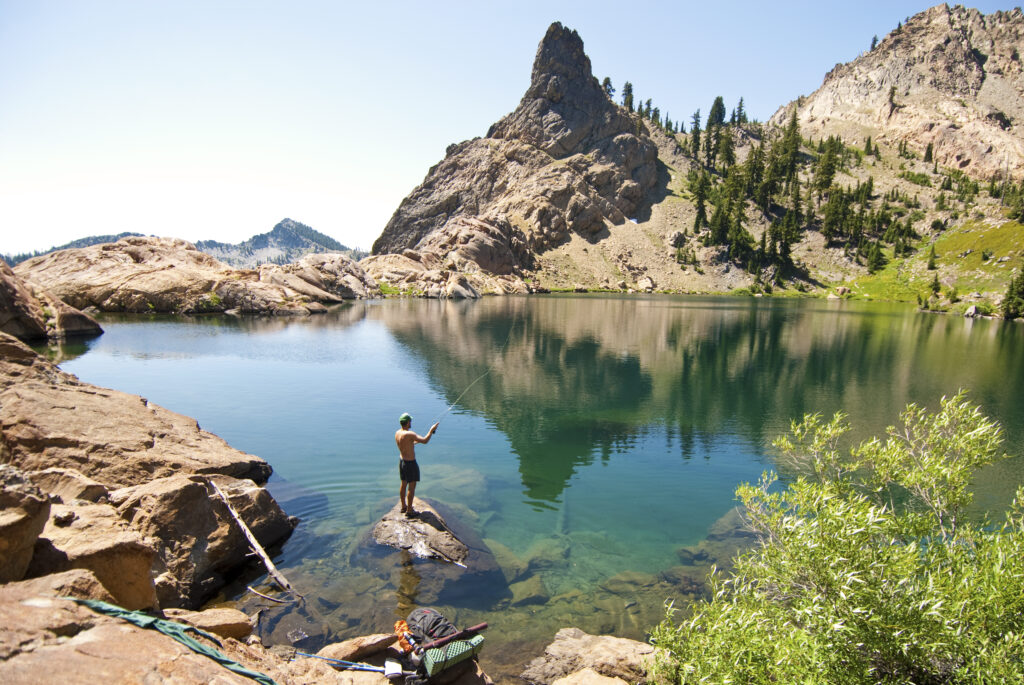
Ravenous little brook and rainbow trout, no longer than a ruler, voraciously smacked dry flies the moment they landed on the water. Both dry and subsurface flies were equally productive, but the Elk Hair Caddis became my go-to fly for the summer. I skated it across the surface and counted the seconds until a strike.
The lake also teemed with small black gnats, and the fish were going crazy over them. I had success midday with the caddis, but the gnat and mosquito patterns took over by late afternoon. I missed fish not due to poor timing, but because of the distracting views. I would gaze at majestic granite instead of watching my fly.
It was early June, with snow still stacked up at the edge of the lakes, trickling meltwater down into them. Summer was upon me and more trails beckoned. I continued my exploration of the New York City subway–like trails of the Trinity Alps, this time heading to the area’s metaphorical Wall Street. Arguably the most popular lakes in the region—the Canyon Creek Lakes—they are stunning, sitting beneath the backdrop of Mount Thompson, the second-highest peak in the wilderness. What an incredible distraction—trying to watch your dry fly while Thompson is lit up at sunrise or sunset. Still, I managed to hook a brown trout that smacked an Elk Hair Caddis as the wind slowly drifted it into view.
With July and August came warmer days and melting snow on the higher-elevation lakes. I was fixated on one of them that required an immense scramble over granite boulders. However, the scramble felt far from a chore, as a 500-foot waterfall cascaded from the lake’s outlet. With every switchback and boulder I climbed, I was rewarded with a different view of the tumbling falls until I reached the lake.
And the lake? It had Sierra Nevada high-definition quality, complete with surround sound, but without the punishing altitude. From its shore up to the skyline, the view left me speechless. The vista of Mount Thompson is the best in the area. To have a lake nestled within such extreme granite formations is beauty overload. I blinked and rubbed my eyes. It felt like I’d been transported to the Sierra Nevada.
Once again, setting up camp could wait. I rigged up the fly rod faster than ever before. Caddis. Ants. Copper Johns. Woolly Buggers. Midges. Hoppers. Every pattern produced in the lake’s deep, cold, and clear water. First cast or tenth—it didn’t matter. It was the ultimate one-stop shop for alpine-style fishing. The lake delivered. Trophies were there for those who wanted them. Still, a trophy barely stretched a ruler’s length.
As the days slowly started to shorten and the autumn air began to cool, most of the anglers shifted their focus to the rivers below, where the salmon and steelhead were beginning their returns. But autumn also meant that off-trail passages, now mostly free of snow, were accessible. I pondered the idea of exploring one of the many off-trail lakes in the region and found myself scrambling on hands and knees up a boulder chute that I hoped was the right direction.
The gamble paid off, and I found myself at a picturesque little lake, sitting in a beautiful cirque of stone ringed with trees. Tiny ripples of water fanned out from all around, bouncing off the shore from rising trout.
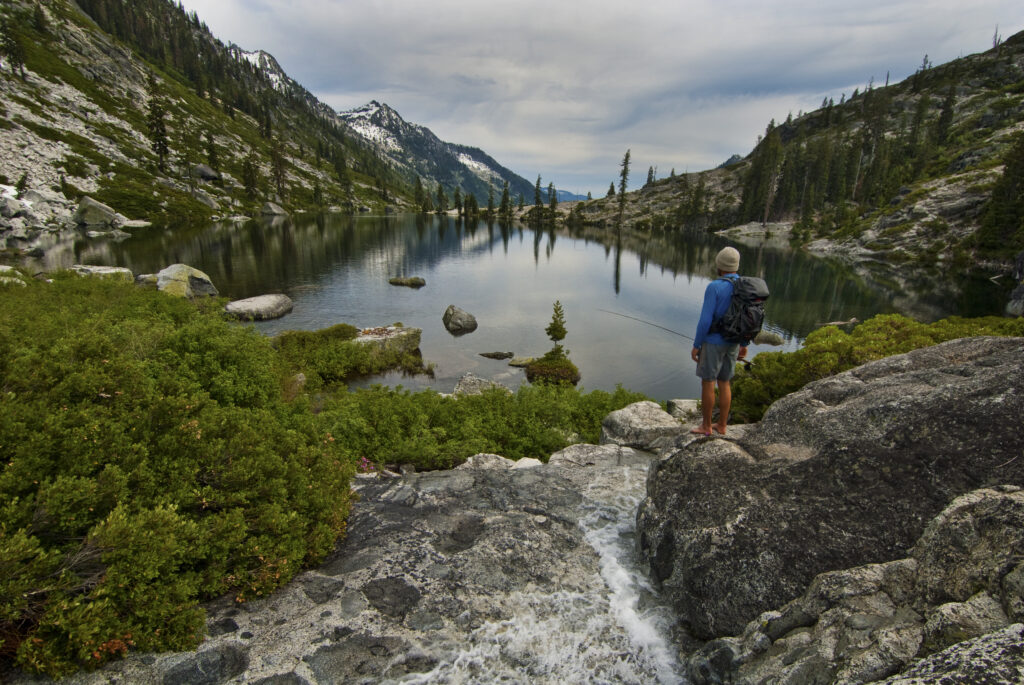
It was the perfect conclusion to a summer of exploration in this region of California. I was grateful for the experience and the solitude it offered. I cast out and hooked a few more brookies, but as always, missed more than I landed—too busy gazing at the natural beauty around me to notice the strikes on my fly.
That’s the truth about these lakes—the ones I’ve visited and the ones I have yet to explore. It was never just about fishing. It was about stillness. Solitude. Setting up the tent after a long day’s hike, boiling up a cup of tea, resting, and watching ripples on the lake under a cloudless sunset. That’s what I went looking for.
The small rod tube strapped to the side of my pack barely registered against the weight of my tent, sleeping bag, pad, book, food, and water. These weren’t burdens; they were enablers. Tools that allowed me to get out into these wild places and stay longer than just a simple day hike would allow.
That’s the beauty of backpacking. And the Trinity Alps and their lakes were in my crosshairs all summer. The trails were splendid and in great shape. The weather—from late spring to early fall—was remarkably dry. The human presence? Small-town variety. Whether it’s your first time in the backcountry or you’re a seasoned veteran, this wilderness is a solitary playground for the backpacker and the curious angler alike.
I found what I was looking for: an alpine sanctuary, unchanged and timeless, where the trout outnumber the people—and the silence speaks for itself.
Essential Gear for the Backcountry
Suggested Fly Gear
- Nothing bigger than a 5-weight
- 3-weight is optimal with a floating line
- Sinking line is a fun option and not too heavy
- 5X to 6X tippet, ultra small
Useful Fly Patterns
- “Use a size 16” – Craig Ballenger
- Elk Hair Caddis
- Hoppers
- Ants
- Gnats
- Beetles
- Mosquitos
- Adams
- Woolly Buggers
- Copper Johns
- Midges
Necessary Accessories
- Sunscreen
- Sunglasses
- Hat
- Beanie
- Down jacket
- Rain jacket
- Headlamp
- Air pad
- Sleeping bag (32° minimum)
- Trekking poles
- Bug spray
- Tent
- Sea to Summit cook set
- Camp stove
- Water filtration system



